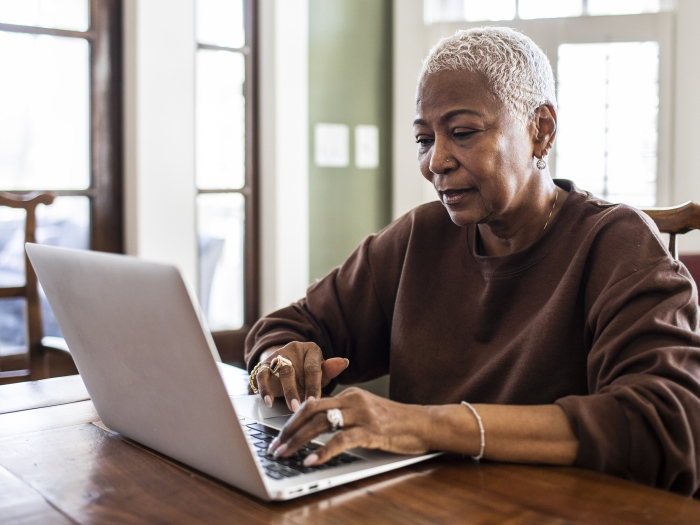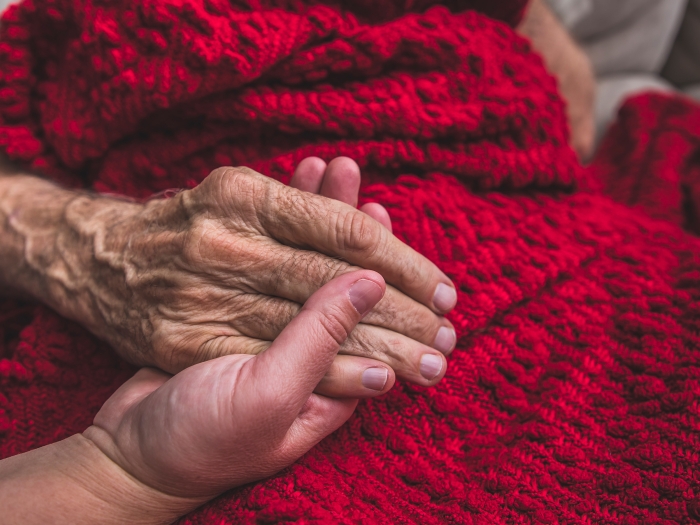Poll finds 1 in 10 people aged 50-64 have used direct to consumer services, and most for prescriptions
8:00 AM
Author |

Only a small percentage of older Americans have jumped on the trend of getting health care services and prescriptions directly from an online-only company, rather than from their usual health care providers in person or via telehealth, a new poll finds.
But that could change rapidly, the University of Michigan survey suggests.
In all, 7.5% of people between the ages of 50 and 80 have used at least one direct-to-consumer health care service from an online-only provider, according to the new findings from the National Poll on Healthy Aging.
Of those who did use such a service, most said they were driven by convenience. More than 60% of them received a prescription, mostly for a one time treatment. But only one third of them told their regular health care provider about the prescription.
People in their pre-Medicare years of 50 to 64 were more than twice as likely as adults over 65 to have used direct to consumer, or DTC, online health services (10% vs. 4%). Meanwhile, 47% of those over 65 said they had never heard of such companies.
Looking to the future, nearly a third of all older adults, and more than 42% of those age 50 to 64, said they’d be interested in using such services in the future.
The poll is based at the U-M Institute for Healthcare Policy and Innovation (IHPI), and supported by AARP and Michigan Medicine, U-M’s academic medical center.
For the DTC survey, the poll team worked with members of U-M’s Center for Value-Based Insurance Design (VBID), who are interested in how cost and convenience influence people’s health care decisions and the continuity of care delivery.
Rapidly growing sector spurs concerns
The rise of DTC sites and subscription based apps that promise convenient online access to providers who can evaluate symptoms, make diagnoses and prescribe medicines has received a lot of attention, especially amid a national crunch in availability of primary care providers and timely appointments.
Such companies include Amazon Clinic, Sesame, Roman, BetterHelp, Rosy, Lemonaid, Hims & Hers, and don’t require a referral or health insurance. Drug companies and membership based organizations including Weight Watchers and Costco have also started offering access to such direct services.
But the trend has raised concern because of the potential for patients to receive care and prescriptions from providers who don’t know their full health history, don’t have access to their full medical records, and may not check for potentially dangerous interactions between medications.
One third of those who had used a DTC service said their primary care provider wasn’t aware they had done so. If they received a new prescription through an encounter with a DTC health service, one third said their regular primary care provider was not made aware of the new medication they were prescribed. The majority of those who received prescriptions through a DTC service said it was for a one time treatment.
“These compelling findings have important implications for patient safety and continuity of care,” said A. Mark Fendrick, M.D., director of VBID and IHPI member who is a primary care physician at Michigan Medicine.
“With rapid growth in this sector of health care predicted for this year and beyond, all providers, insurers and regulators need to pay more attention to how patients are using these services and why, and the impact on care quality and safety.” Fendrick is a professor of internal medicine in the Division of General Medicine at the U-M Medical School.
His colleague Nicole Hadeed, M.D., who also worked on the poll and is a clinical assistant professor, notes that while the number of poll participants who said they had used DTC services was relatively small, the analysis gives clues that should inform further research.
Types of care received
Nearly half of those who had used a DTC service said it has been for general health care such as treatment of allergies, sinus infections, pink eye or acid reflux, though again there was a clear divide between the 50-64 and 65-80 age groups.
Overall, nearly 12% said they’d used a service for mental health reasons, but the proportion was much higher (50%) among respondents who said they considered their mental health to be fair or poor and had used a DTC service of any kind.
As for other types of care, 15% had sought help from a DTC service for a sexual health issue, 9% had used it for skin care, 6% had used it for weight management, nearly 5% had used it for hair loss and a similar percentage had used it for pain management.
SEE ALSO: "Deprescribing" medicines for older adults: Patient-provider dialogue needed
Convenience topped the list of reasons for choosing a DTC service, with 55% saying this drove their decision. But lack of access to their regular health care provider, not having a regular health care provider, or needing a service when their health provider was not open or available were each cited by around 20%. Discomfort discussing a sensitive health topic with a provider – often cited in marketing by such companies – was only mentioned by 10% of those who had turned to a DTC service.
“For both patients and providers, these findings drive home the importance of open dialogue and transparency about the potential uses, benefits and risks of these services – and the importance of maintaining contact for ongoing primary care,” said Jeffrey Kullgren, M.D., M.P.H., M.S., director of the poll and a primary care provider at the VA Ann Arbor Healthcare System who is also an associate professor at the U-M Medical School.
More than 55% of the poll respondents who had used a direct to consumer service said the overall quality of care they get from their primary care provider is better than what they received from a DTC provider.
Fendrick and Hadeed wrote about the potential long term change to primary care use from telehealth services in a piece published early in the COVID-19 pandemic in the American Journal of Managed Care.
And in fact, 58% of poll respondents who had used a DTC service had started doing so in 2020, 2021 or 2022.
Alternative care options
The rapid pivot during the pandemic to vaccination in pharmacies, and not just primary care clinics, has also changed how people think about alternate ways of getting care that might be closer to home or have more flexible hours.
However, Fendrick notes, pharmacies share information about vaccination with insurance companies and statewide immunization registries that primary care providers can access.
“Patients will increasingly seek care online because of the convenience it can provide, especially for those willing to pay the cost out of pocket,” said Fendrick. “Its use will likely be boosted by the rapidly increasing number of online vendors and the national shortage of primary care clinicians. The recent launch of a telemedicine platform offering home delivery for the new highly popular weight loss drugs is a noteworthy example of this trend."
He added, “Given a likely expansion of online care, it is critical that individuals inform their usual clinician and that we providers consistently ask our patients regarding their use. Similar to my routinely asking patients about which supplements, vitamins and over the counter medications they’re taking, it should become standard practice for me to inquire about prescriptions or diagnoses they’ve received online, as it might influence their care.”
The poll was a nationally representative survey conducted by NORC at the University of Chicago for IHPI and administered online and via phone in July and August 2023 among 2,657 adults aged 50 to 80. In all, 168 respondents reported having used a DTC health care service. The sample was subsequently weighted to reflect the U.S. population. Read past National Poll on Healthy Aging reports and about the poll methodology.
Sign up for Health Lab newsletters today. Get medical tips from top experts and learn about new scientific discoveries every week by subscribing to Health Lab’s two newsletters, Health & Wellness and Research & Innovation.
Sign up for the Health Lab Podcast: Add us on Spotify, Apple Podcasts or wherever you get you listen to your favorite shows.

Explore a variety of health care news & stories by visiting the Health Lab home page for more articles.

Department of Communication at Michigan Medicine

Want top health & research news weekly? Sign up for Health Lab’s newsletters today!





